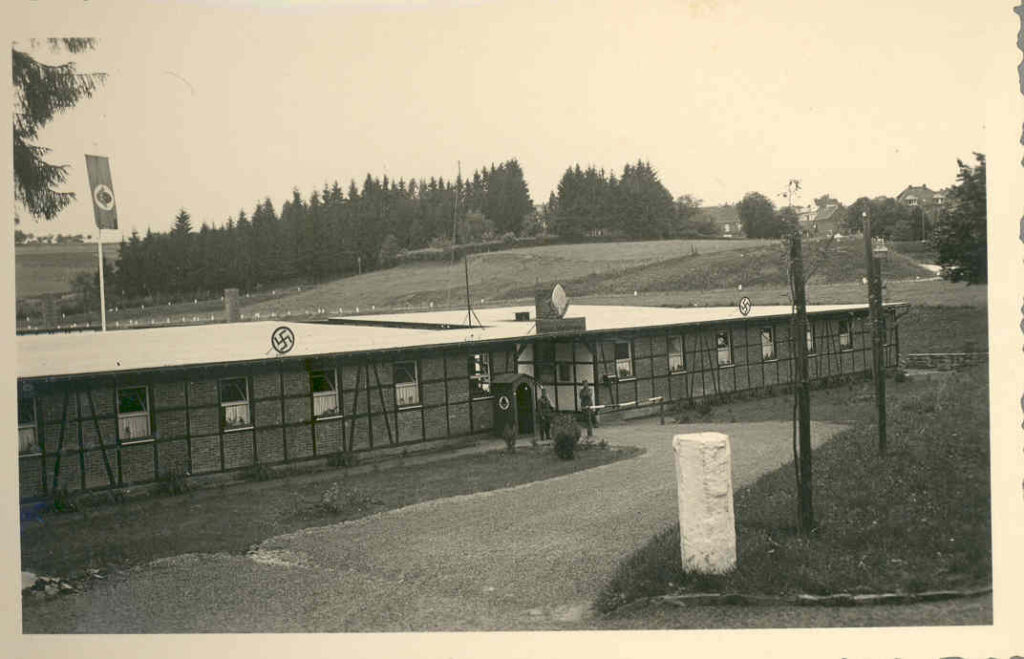In 1941 the first assembly camps for Jews were set up. The Jewish people living in the Sieg district who did not have to do forced labor in companies important to the war were sent to the former Reich Labor Service (RAD) Camp Much until June 16, 1941. Excessive rent payments were demanded of the Jews for “living” in the overcrowded (three families had to share a room) and relatively dilapidated premises. The residents suffered from constant food shortages. The Jewish butcher Hugo Koppel from Siegburg acted as camp manager. There were also people who helped the interned Jews, such as the Ruppichteroth community nurse Aureliana of the Order of the Precious Blood, who threw food over the camp fence.
In the months of June and July 1942 in particular, the deportations from Much took place first to the Cologne exhibition hall and temporarily to the barracks camp in Cologne-Müngersdorf. From the Deutz-Tief train station, the Jews then had to travel to Riga, Auschwitz, Minsk, Theresienstadt, Lublin and other places of horror, which usually led them to their deaths. Only Moses Aron from Bad Honnef survived the internment in the Much camp.
Some of the barracks survived until the mid-1960s. On January 27, 2002, a memorial stele for the victims of National Socialism was inaugurated at the former location.


Timeline Rosbach/Sieg
- ↑ Return of the Seligmann family from Argentina to Rosbach – November 1, 1957
- ↓ The pogrom night in Ruppichteroth – November 9, 1938
